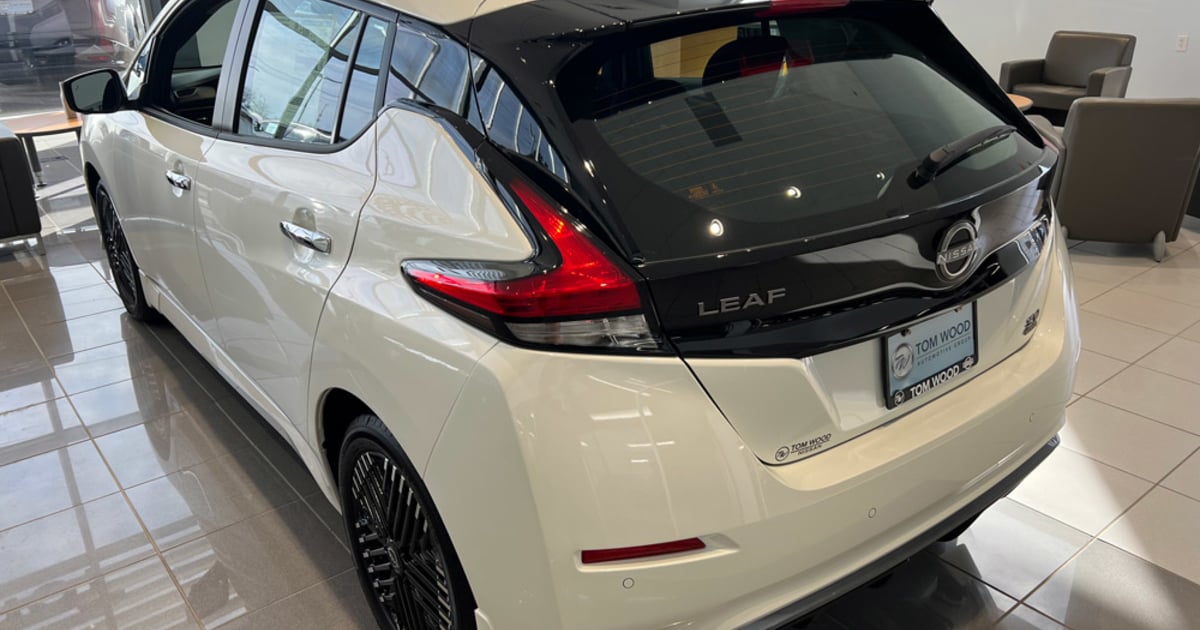
The Nissan Leaf — the OG of electric vehicles in the U.S. — has become a casualty of tightening battery sourcing requirements under the Inflation Reduction Act.
The Smyrna, Tenn.-built Leaf — among the least expensive EVs on the market — is no longer eligible for a tax credit under new rules that went into effect April 18.
The loss of federal support comes as the aging hatchback struggles to stay relevant in a tsunami of newer, better-designed, longer-range competitors. Leaf sales peaked in 2014 at 30,200. Last year, Nissan sold 12,025 units, down 16 percent from a year earlier. Production of the current Leaf will end mid-decade when a coupe-like crossover replacement arrives.
Acknowledging its predicament, Nissan is adjusting its lease offer.
Nissan has dropped the monthly payment on the base Leaf model to $309 from $329 for a 36-month lease. And the lease down payment is shaved 21 percent to $1,999. The Leaf does qualify for a $7,500 commercial clean vehicle tax credit.
“We’re looking to make sure that we’re providing good value, but we’re also competitive in the market,” Nissan spokesperson Brian Brockman told Automotive News.
Nissan was an early proponent of local sourcing for the Leaf, when it constructed a dedicated battery plant next to its Smyrna vehicle assembly that produced its own battery cells.
Japanese supplier Envision AESC now operates that battery production center on the Smyrna site.
But now, to qualify for the full $7,500 federal tax credit, at least 40 percent of the value of the EV battery’s critical minerals must be extracted or processed in the U.S. or in a country where the U.S. has a free-trade agreement, or from materials recycled in North America. In addition, at least half of the value of the EV’s battery components must be made or assembled in North America.
Those percentages ramp up over time, maxing out at 80 percent in 2027 for minerals and 100 percent in 2029 for battery components.
“Nissan has not yet been able to certify that it meets new battery component and critical mineral requirements,” Brockman said. “We are working closely with our suppliers and are hopeful that Leaf will qualify for at least partial credit in the future.”
But at a starting price of $29,135, including shipping, Brockman said, the Leaf offers “good value” even without the tax break.
If the loss of the federal credit further erodes Leaf sales, it could also make it challenging for Nissan to meet toughening national emissions standards.
The automaker does not sell hybrid models in the U.S. Its only other EV — the new Japan-made Ariya crossover — so far faces supply challenges and also does not qualify for the federal tax credit.
EPA emissions standards will become 5 to 10 percent stricter each model year, with an industrywide target of 161 grams of carbon dioxide per mile — or 40 mpg on window stickers — by the 2026 model year.
Things get even more challenging for the industry after that. The EPA earlier this month unveiled its strictest-ever limits on vehicle tailpipe pollution, requiring automakers to hit a fleetwide average greenhouse gas emissions target of 82 grams of carbon dioxide per mile for light-duty vehicles in the 2032 model year.
“Nissan will have to significantly increase EV sales in the United States to hit the emission standards,” said a Nissan dealer, who requested he not be identified. “It comes down to ‘Would [Nissan] rather write a check to the customers to buy their car through incentives or write a check to the government?’ ”